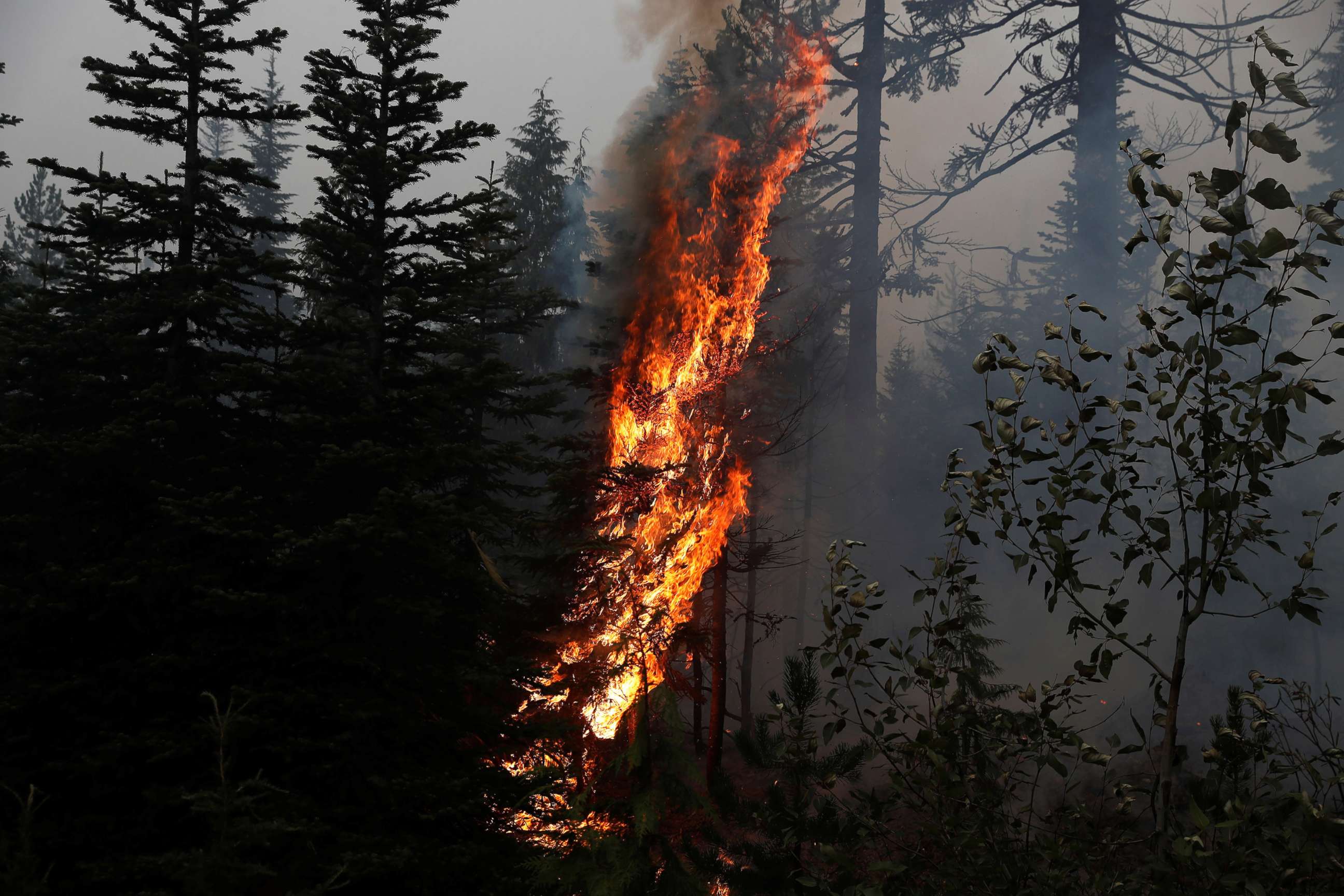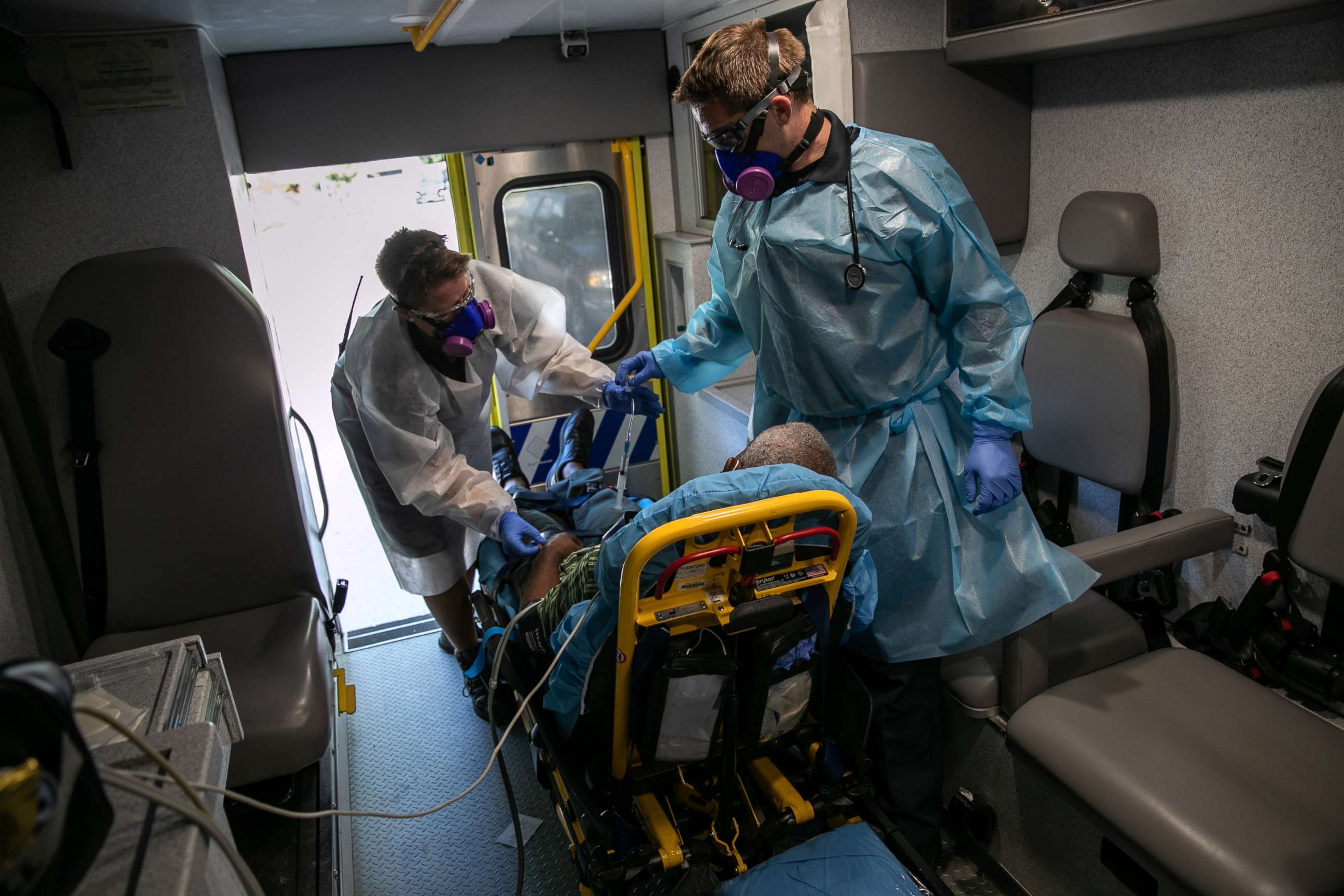Twin disasters: How the West Coast fires might impact the COVID-19 pandemic
Wildfire smoke is heightening health concerns in California.
As the California wildfires and the COVID-19 pandemic rage on in tandem, they may pose a serious double threat.
"Now we're battling two public health crises," Panagis Galiatsatos, M.D., M.H.S., a pulmonologist at Johns Hopkins Bayview Medical Center and volunteer medical spokesperson for the American Lung Association, told ABC News.
And it gets worse: The two forces of nature may interact with each other. "When we have public health concerns from wildfires to hurricanes, we worry about worsening spread of the virus," said Galiatsatos.

Wildfire smoke causes air pollution by creating particulate matter, microscopically small particles that may bypass filters in the nose and throat and penetrate deep into the lungs. These particles can cause airway inflammation, leading to increased susceptibility to respiratory infections, aggravation of underlying respiratory conditions and increased risks for hospitalization and death from pneumonia.
"Ongoing studies will give us more information on wildfire smoke and COVID-19, but we do know that air pollution makes COVID-19 worse, especially if you have underlying conditions," said Simone Wildes, M.D., an infectious disease specialist at South Shore Health and ABC News Medical Unit contributor. The combination of airway inflammation caused by irritants in smoke plus underlying conditions such as asthma or chronic obstructive pulmonary disease create a "perfect storm" for poor COVID-19 outcomes, she added.
"Even if you have great working lungs, if you breathe in remnants from fires, your lungs may be impaired and ill-prepared to fight off the virus," said Galiatsatos.
Previous studies have shown that during wildfires, affected areas see a substantial increase in emergency room visits and hospital admissions for respiratory illnesses (like asthma or emphysema) and cardiovascular conditions (such as heart attacks and strokes). Now, experts are concerned that the wildfires may add to the pandemic's strain on California's hospitals. "Hospitals are going to have to treat a lot of breathing problems as a result of damage from fire exposure. Capacity will be stretched," said Wildes.
As people are forced to flee from the fires and take refuge together, social distancing efforts may be compromised. Shelter crowding is a major concern, she said, but so are the effects of inhaling toxins from wildfire smoke. "The big thing is social distancing is going to be hard, but you have to balance immediate danger, like needing to get people to safety from a fire, with the overall danger of spreading infection. The important thing is to get back to social distancing as soon as you are able."
Similarly, Wildes explained, "Staying indoors is a double-edged sword now."
"If your house is too close to the fire, then you have to evacuate, but if you're not so close, it's safer to stay indoors and protect yourself from the smoke," she said. Unfortunately, if you do have to go outdoors, the cloth masks that are recommended for reducing COVID-19 transmission won't keep you safe from the effects of air pollution. "N95 masks work best in fires, but because of the pandemic, we have a shortage, which is another double-edged sword."

The Centers for Disease Control and Prevention offers guidelines for staying safe while the COVID-19 pandemic overlaps with devastating wildfires. Checking air quality reports frequently is essential. The CDC recommends creating a cleaner air space at home, if possible, as well as adhering to social distancing and respiratory and hand hygiene practices as best as you can if you do have to go to a public disaster shelter.
Because COVID-19 and smoke inhalation can result in similar symptoms -- shortness of breath, sore throat, cough -- Dr. Wildes recommends discussing any concerning symptoms with your health care provider to see if COVID-19 testing is recommended.
"The major thing to remember is that if people don't catch the virus, they can't spread it. Now is the time to do everything you can," said Galiatsatos.
Leah Croll, M.D., is a neurology resident at NYU Langone Health and a contributor to the ABC News Medical Unit.
This report was featured in the Tuesday, Sept. 15, 2020, episode of “Start Here,” ABC News’ daily news podcast.
"Start Here" offers a straightforward look at the day's top stories in 20 minutes. Listen for free every weekday on Apple Podcasts, Google Podcasts, Spotify, the ABC News app or wherever you get your podcasts.




